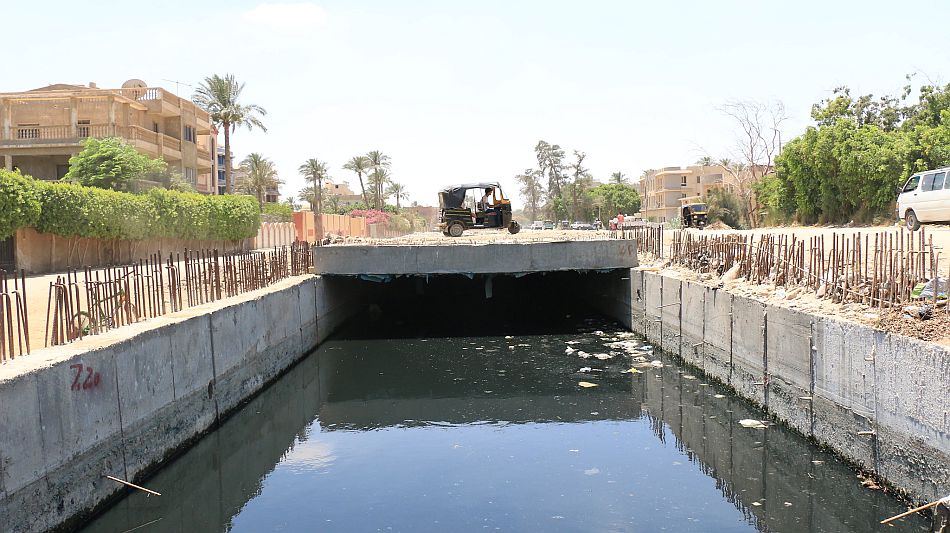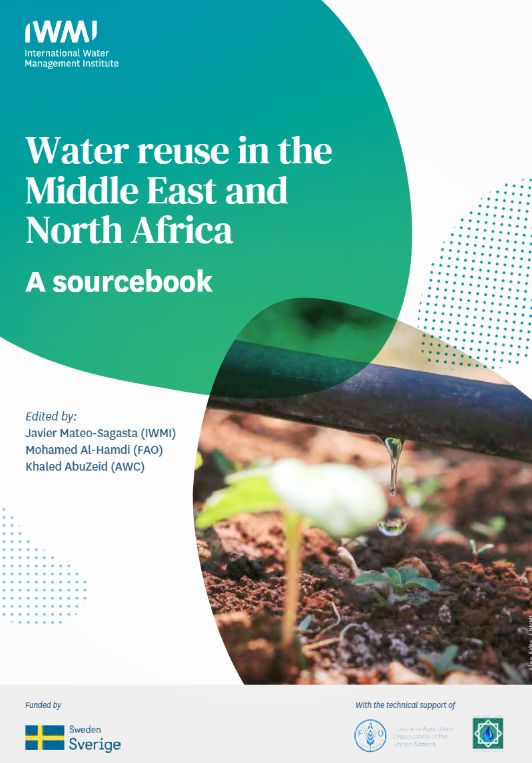In the world’s most water-stressed region, smart water reuse offers immense potential
By Javier Mateo-Sagasta, Project Leader – ReWater MENA, and Senior Researcher & Coordinator – Water Quality, IWMI

When ReWater MENA was launched at Cairo Water Week in Egypt in 2018, it marked the start of an ambitious four-year project to expand the safe reuse of water in the Middle East and North Africa (MENA). Like many parts of the world, the MENA region does not have enough water to meet rising demand.
Four years later, the IWMI-led and Sida-funded project has come full circle. At Cairo Water Week 2022 in October, IWMI presented a policy report the High-Level Joint Water-Agriculture Technical Committee of the League of Arab States (LOAS). The committee is made up of senior officials from the water and agriculture ministries of member countries. Based on project learnings and research findings from 19 MENA countries, with a specific focus on Egypt, Jordan and Lebanon, the report makes recommendations for greater and safer water reuse. These address the main challenges the project identified, notably:
- social acceptance of water reuse,
- financial sustainability of water reuse models,
- planning and governance, and
- gender equity and inclusion.
LOAS plans to disseminate the report to its member countries, underlining the increasing political will for water and climate action. This is urgently needed because per capita water availability is decreasing. In the past decades, the MENA region has experienced the fastest decline in available water resources globally. Part of this is due to population growth, which increased by more than 50% in the last 20 years, but urbanization and shifting weather patterns also play a role.
Tapping the potential of wastewater
As our findings show, smart reuse of water could go a long way to closing the supply-demand gap. At present, wastewater is largely part of the problem. The amount of wastewater generated has doubled in the last 30 years, but wastewater treatment capacity has not grown at the same rate in some countries. This has led to increasing amounts of untreated wastewater contaminating freshwater supplies. More water pollution means less water that is safe to use, aggravating water scarcity.
But wastewater is also part of the solution. Wastewater production grows as populations, urbanization and income per capita grow – the only water source to do so. In addition, this ‘waste’ contains valuable resources. Water is the most important and abundant asset in wastewater and can be used as a substitute for fresh water if appropriately treated. Nutrients such as nitrogen, phosphorus and potassium are important in agriculture and aquaculture. Organic carbon can be used as a soil conditioner or to generate energy.
Nevertheless, wastewater’s reuse potential remains largely untapped. Of the total 21.5 billion cubic meters (BCM) of municipal wastewater generated each year, only around 10% is treated and reused directly for irrigation, landscaping, industrial processes and so on. A further 36% is reused indirectly, for example by farmers drawing water from streams or rivers containing wastewater. Indirect use is often informal and unsafe because of the lack of treatment. The majority of municipal wastewater – 54% – is lost when it is discharged to the sea or evaporates.
Recovering lost wastewater and making water reuse safer are therefore priorities. As indirect water reuse is by far the most extensive type of reuse in the region, it is also critical to carry out more and better health risk assessments. The region needs to accelerate the expansion of financially sustainable treatment facilities. But these measures should be accompanied by the adoption of on-farm and post-harvest practices that ensure safe water reuse in food supply chains.
Water reuse sourcebook
 In Lebanon, we studied the potential for expanding the safe treatment and reuse of wastewater, including in irrigation. The study provides a comprehensive assessment of the quantities of treated water available for safe reuse in irrigation and identifies the wastewater treatment plants that have the highest reuse potential. In parallel, we conducted field trials that fed into the formulation of official standards for agricultural water reuse.
In Lebanon, we studied the potential for expanding the safe treatment and reuse of wastewater, including in irrigation. The study provides a comprehensive assessment of the quantities of treated water available for safe reuse in irrigation and identifies the wastewater treatment plants that have the highest reuse potential. In parallel, we conducted field trials that fed into the formulation of official standards for agricultural water reuse.
Research on the long-term impacts of water reuse in the Jordan Valley, an important agricultural area, is ongoing. However, several successful water reuse initiatives in Jordan serve as inspiration not only for the water reuse feasibility assessments we have been conducting in the northern Jordan Valley and Wadi Assir but for other MENA countries as well.
With ReWater MENA now concluded, we have brought together the project findings and more in a MENA water reuse sourcebook. Due to be published this fall, the book reviews the state of water reuse in the MENA region, documents lessons from existing reuse models and provides recommendations to overcome past water reuse management challenges.
Water security is climate security
A month after Cairo Water Week, and with international attention again turning toward Egypt for the 27th United Nations Framework Convention on Climate Change COP27 from November 6–18, the link between water security and climate security is becoming increasingly evident. Faced with a climate crisis and a growing energy crisis, COP27 will seek renewed cooperation between countries to deliver on an array of issues. These range from reducing carbon emissions to building resilience and adapting to the impacts of climate change. Water, including wastewater, plays a vital role in all of these.
ReWater MENA focused on one region. But as the most water-stressed region in the world, it offers valuable lessons for other areas facing increasing water scarcity. This is the message we will take to COP27, where we will present the sourcebook as an evidence-based resource for policymakers and implementers on safe water reuse and the many social, economic and environmental benefits it can bring.

